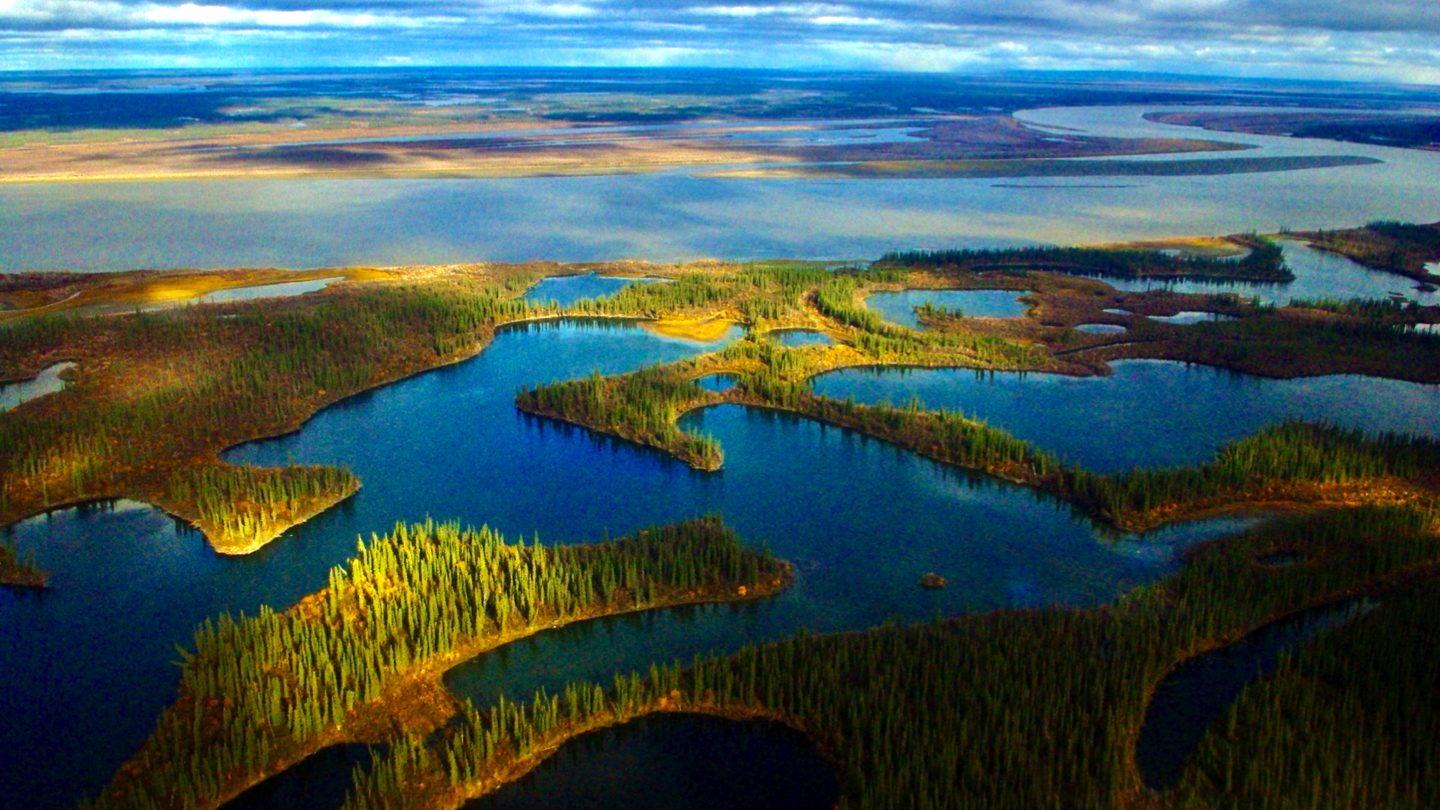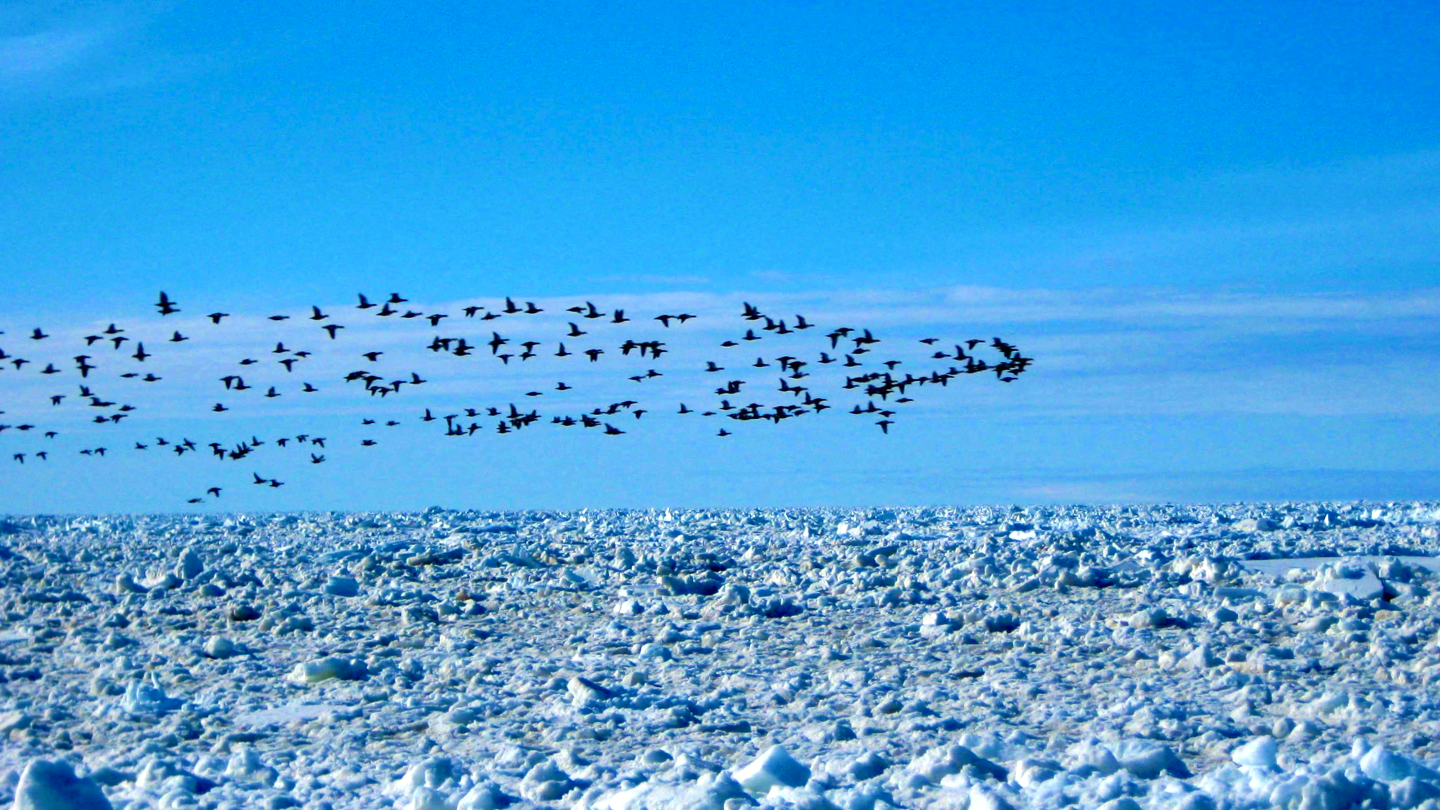Originally published in Ocean for Life, a book produced by the Human Development Forum.
Today, we are witnessing a new ocean emerging. For almost all of human history, the Arctic Ocean has been a frozen sea dominated by sea ice whose properties include the ability to reflect sunlight. It has played an essential role in regulating climate on the planet well beyond the Arctic. Simply put, it serves as Earth’s air conditioner.
At the heart of the Arctic is the Central Arctic Ocean — 2.8 million km2 of high seas surrounding the North Pole. The border is formed by the 200 nautical mile line drawn across the shores of five circumpolar states — Canada, the Kingdom of Denmark (on behalf of Greenland), Norway, Russia and the United States.
Beneath its ice-covered surface, the Central Arctic Ocean teems with life. In spring, plankton blooms flourish under the ice, fueled by an influx of freshwater from Arctic rivers. This seasonal productivity supports a diverse food web, including Arctic cod, seals, walrus and narwhal, as well as migratory seabirds and bowhead whales.
Its seafloor — comprised of deep basins, ridges, and extensions of the continental shelf — also contains geological features typical of deep-sea mineral deposits. These ecosystems are not only biologically rich but also geologically significant.

Peary caribou in Sachs Harbor, in the Northwest Territories of Canada.
Photo credit: Louie Porta
Equally compelling are the people of the North. Over five million people call the region home, including Indigenous communities that for millennia have sustained vibrant cultures and deep-rooted knowledge systems, intricately tied to the Arctic environment.
This largely intact seascape is incredibly productive and has supported Arctic peoples for millennia. However, the intensifying impacts of warming air and sea temperatures, ocean acidification and sea ice loss, along with interest in expanded fishing, shipping and offshore development, create a global imperative to focus on the future of the Arctic Ocean.
Safeguarding the Central Arctic Ocean will contribute to the global 30x30 goals. However, doing so effectively requires more than protecting its waters and wildlife. It also means strengthening Indigenous rights, cultural heritage, sovereignty and regional security.
The Arctic has historically benefited from productive and mutually beneficial partnerships. It has inspired cooperation, rather than conflict. The Arctic peoples and nations have understood what is at stake. Safeguarding the Arctic has been seen as a shared obligation. With each passing generation, people and nations have done what is necessary to preserve this special place.

Arctic inlets in the Mackenzie Delta in Canada. Photo credit: Louie Porta
Through the Cold War, through the breakout of war in Ukraine, the arc of cooperation in the Arctic has been tested. Time and again, it has held. Now as the race for deep sea resources, geopolitical tensions and trade imperatives loom, we have to ask: will this exceptionalism continue to remain strong?
In a world marked by resource competition and geopolitical tensions, the Arctic can and should remain a model of peaceful and sustainable collaboration. Many Arctic peoples and governments are primed to advance conservation not only in their national waters but to engage in international cooperation to preserve the Central Arctic Ocean.
Just eight years ago, Arctic nations, along with China, Japan, South Korea, Iceland and the European Union gathered in Greenland to sign the Central Arctic Fishing Agreement (see box). Arctic nations and some of the world’s largest economies set aside short-term interests for the sake of global cooperation. This agreement placed a 16-year moratorium on commercial fishing and prioritized scientific research on the ecosystem and region’s fish stocks.
While the fishing agreement was a crucial step forward, additional threats now need consideration.
Governance gaps for the Central Arctic Ocean remain unfilled and no existing multilateral bodies are ready to develop the precautionary action needed to protect it. The need to fill these gaps is becoming more urgent as the Central Arctic Ocean icepack melts and novel uses of its resources, including shipping and deep-sea mining, are proposed without Arctic-ready policies being developed and in place.
Arctic and Arctic-interested states must work together to address resource, trade, science, sovereignty and conservation priorities. The most straightforward way to mitigate the risks is a new international agreement, modelled on the Central Arctic Ocean Fishing Agreement that freezes the current status with a moratorium on activities such as deep-sea mining and shipping, and advances scientific understanding of the potential impact. Such an agreement would allow an orderly consideration of if and when it makes sense to proceed.
Creating the right conditions for this type of cooperation will take time and flexibility and alliance building.

Geese flying over Arctic ice. Photo credit: Louie Porta
Underpinning this process requires knowledge and information sharing. This includes advancing the state of knowledge on important Central Arctic Ocean marine ecosystems; elevating Indigenous and public support for a treaty process; developing ways to prevent ocean industrial pressures from ‘running wild’ in the Central Arctic Ocean while management and rules are put in place; and laying the foundation to establish a joint program of scientific research and monitoring to inform decisions regarding actions and mitigation measures.
The Central Arctic Ocean is not only vital to global climate stability, but also to biodiversity and the livelihoods of those who live in and rely on the Arctic. As a largely intact and still thriving ecosystem, it presents a rare opportunity for proactive global stewardship.
To ensure a long-term protection, we must empower and support those working to safeguard the Arctic. With focused, cooperative action, we can secure a future for the Central Arctic Ocean — one that honors its past, protects its present, and sustains its value for generations to come.
What is the Central Arctic Ocean Fishing Agreement?
The Central Arctic Ocean Fishing Agreement, which went into effect in June 2021, protects the Central Arctic Ocean and its fish stocks.
Signed by ten parties including Canada, Denmark (for Faroe and Greenland), Norway, Russia, the United States, China and others, it imposes a 16-year ban on commercial fishing in the Central Arctic Ocean. This allows scientists to study the region’s biodiversity and potential for sustainable fishing without causing ecological harm.
The purpose is clear: give science a head start before exploitation begins. This pause allows for essential research into biodiversity and the long-term potential for sustainable fishing, avoiding ecological damage before it occurs.

Message sent
Thank you for sharing.